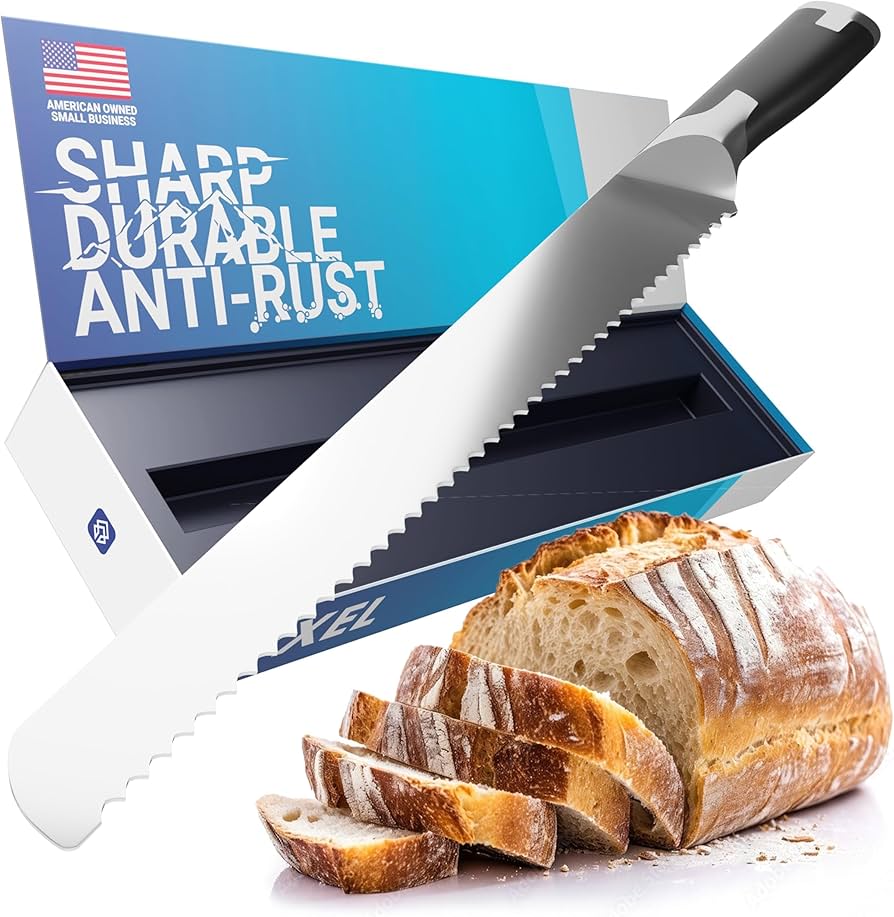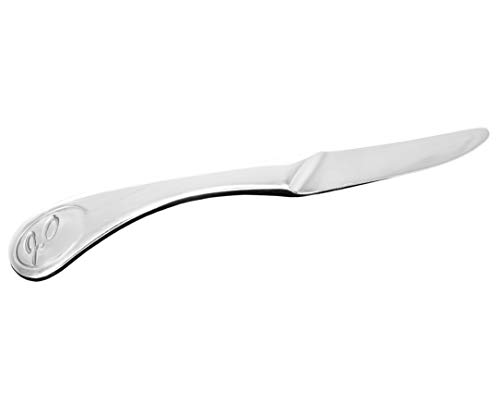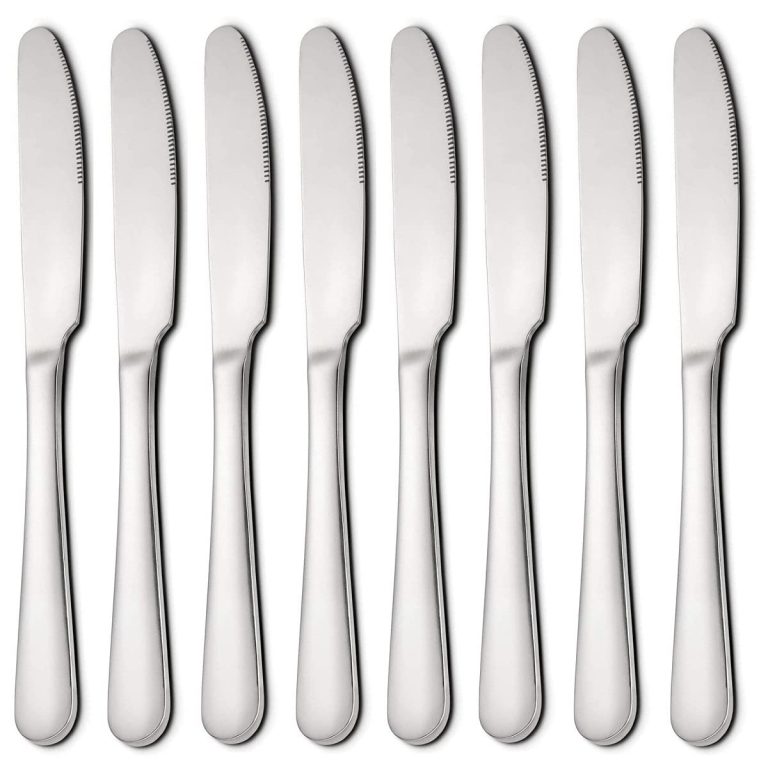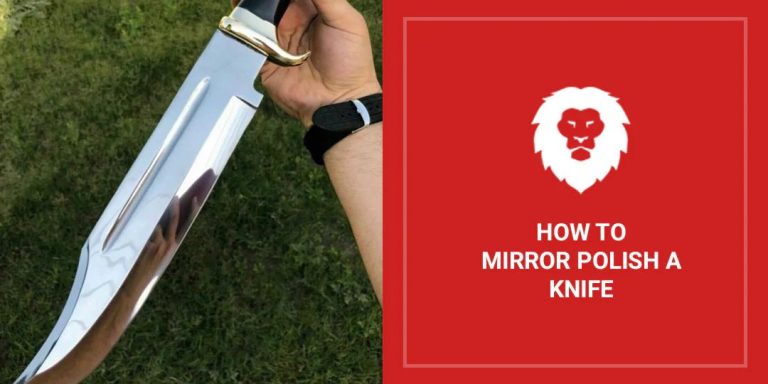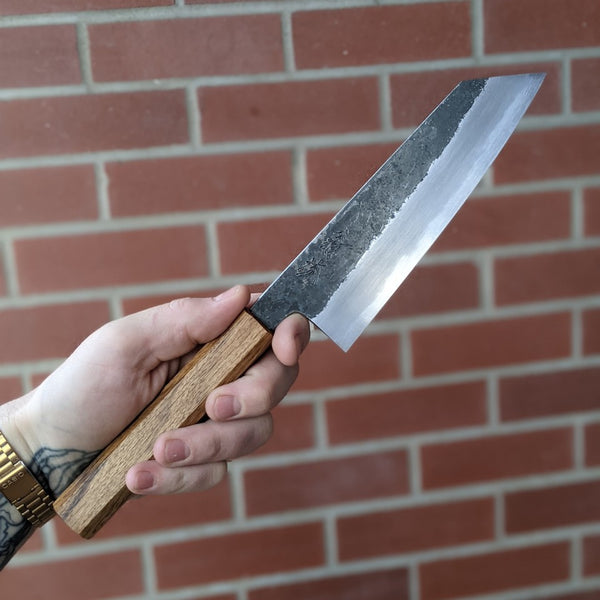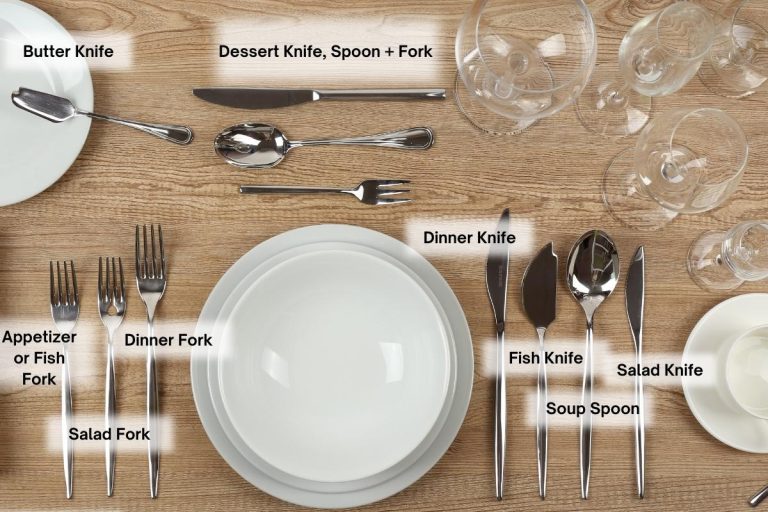How Long Can a Kitchen Knife Be Wet: Essential Care Tips
A kitchen knife should not stay wet for long. Extended exposure to moisture can cause damage.
Keeping your kitchen knives dry is crucial for their longevity. Excess moisture can lead to rust, dullness, and even bacterial growth. But how long can you leave a knife wet before it becomes a problem? Understanding this can help maintain your knives in good condition.
In this blog post, we’ll explore the effects of moisture on kitchen knives. We’ll discuss the ideal practices for drying and storing your knives. This will ensure they remain sharp and safe for use. Read on to find out more about protecting your valuable kitchen tools from water damage.
Importance Of Knife Care
Proper knife care is crucial for maintaining the longevity and performance of your kitchen tools. A well-maintained knife ensures safety and enhances your cooking experience. Neglecting knife care can lead to dull blades, rust, and potential accidents.
Impact On Longevity
Keeping a kitchen knife wet for too long can damage it. Moisture exposure weakens the blade over time. Rust forms on the metal. This reduces the knife’s lifespan. Drying your knife immediately after washing helps prevent this. Use a clean, dry cloth for best results.
Safety Concerns
A wet knife can be dangerous. Slippery handles increase the risk of accidents. Wet blades are harder to control. This can lead to cuts. Always ensure your knife is dry before using it. This simple step keeps you safe in the kitchen.

Credit: www.instagram.com
Effects Of Water On Knives
Water can have significant effects on kitchen knives. While it might seem harmless, prolonged exposure to water can damage your knives. From rust to handle deterioration, water can ruin your kitchen tools.
Rust And Corrosion
Rust and corrosion are common issues for kitchen knives. When a knife stays wet, it can develop rust. Rust weakens the metal, making the knife less effective. Stainless steel knives resist rust better. But they are not immune. Any knife left wet will suffer.
To prevent rust, always dry your knives. Use a soft cloth to remove water. Store them in a dry place. Avoid leaving them in the sink. This simple step can save your knives.
Handle Deterioration
Handles can also suffer from water exposure. Wooden handles absorb water. This can cause them to swell and crack. Even plastic handles can weaken over time. Metal handles may corrode.
Consider these tips to protect your knife handles:
- Dry handles thoroughly after washing.
- Do not leave knives soaking in water.
- Store knives in a dry environment.
Proper care extends the life of your knives. Pay attention to both the blade and the handle. This ensures your kitchen knives stay in top condition.
Proper Drying Techniques
After washing your kitchen knife, drying it properly is crucial. Wet knives can rust, dull, and even develop bacteria. You can dry your knife by air drying or using a towel. Each method has its own benefits.
Air Drying
Air drying is a simple method. Place the knife on a drying rack or a clean surface. Make sure the blade is facing up. This allows the water to drain off easily. Leave the knife in a well-ventilated area. This helps it dry faster and more evenly. Avoid placing it in a drawer or enclosed space while wet.
Using A Towel
Using a towel is another effective way to dry your knife. Choose a clean, dry towel. Gently wipe the blade from the spine to the edge. Be careful not to cut yourself. Pay special attention to the handle and the area where the blade meets the handle. These spots can trap moisture. Ensure the knife is completely dry before storing it.
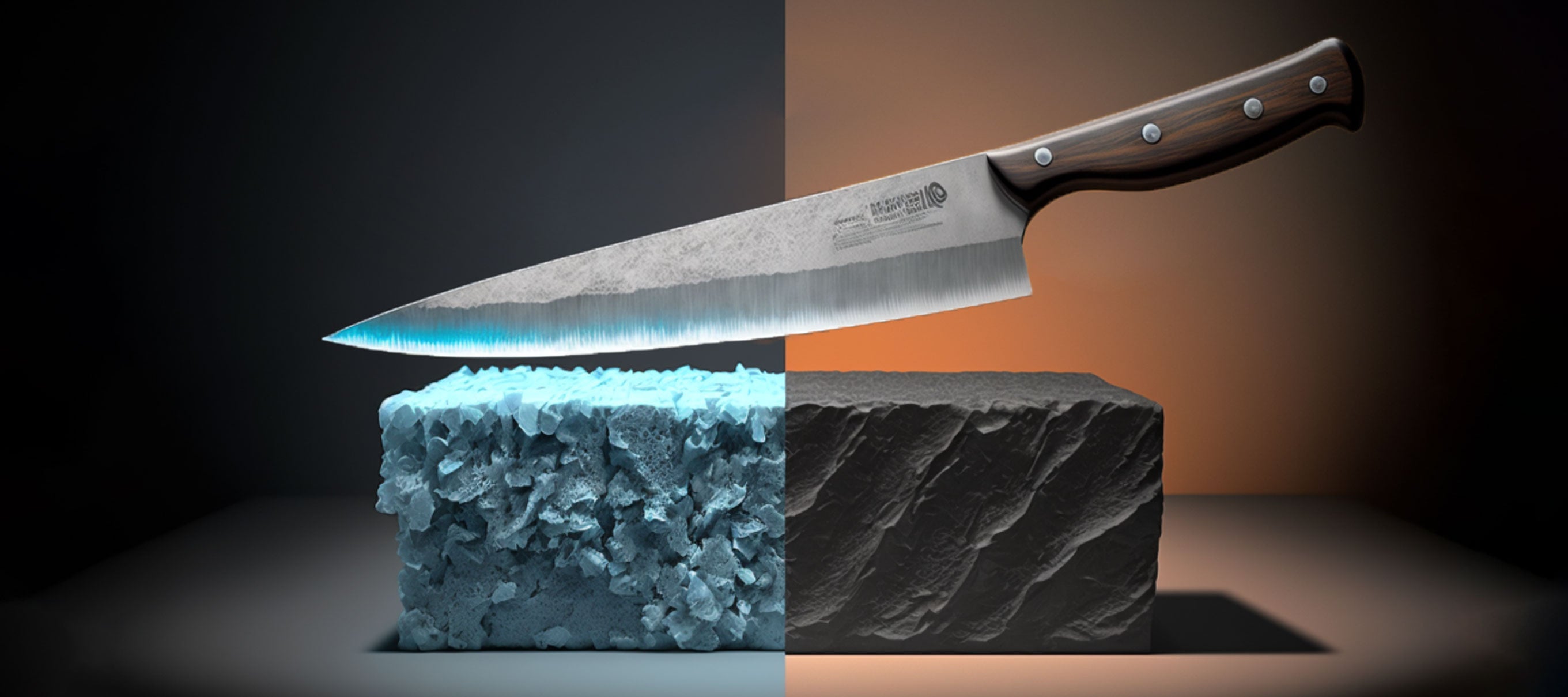
Credit: santokuknives.co.uk
Ideal Storage Conditions
Ideal storage conditions for kitchen knives are critical for maintaining their longevity and sharpness. Storing them properly can prevent rusting and damage. Let’s explore some of the best storage options.
Knife Blocks
Knife blocks are a popular choice for many kitchens. They offer a safe and convenient way to store knives. A knife block keeps the knives dry and prevents them from getting wet. Always ensure the knives are clean and dry before placing them in the block.
| Pros | Cons |
|---|---|
| Easy access to knives | Can harbor bacteria |
| Organized storage | May dull blades over time |
To ensure hygiene, clean the block regularly. Use a brush to remove crumbs and dust from the slots.
Magnetic Strips
Magnetic strips are another excellent choice for storing kitchen knives. They provide a visual display and allow for quick access. A magnetic strip keeps the knives off the counter and away from moisture.
- Easy to clean
- Space-saving
- Prevents blade damage
Ensure the knives are dry before placing them on the strip. This prevents rust and maintains the knives’ quality.
Magnetic strips come in various lengths and can be mounted on walls. Choose a suitable size to fit all your knives.
Cleaning Best Practices
Cleaning your kitchen knives properly is crucial for their longevity. Improper cleaning can lead to rust, dullness, and bacterial growth. Here are some best practices for keeping your knives in top shape.
Hand Washing
Always hand wash your kitchen knives. Use warm water and mild soap. Avoid abrasive sponges; they can scratch the blade. Gently scrub both sides of the blade. Rinse thoroughly to remove all soap.
Dry the knife immediately after washing. Use a soft cloth to prevent water spots. Never leave your knife wet. Moisture can lead to rust and damage.
Avoiding Dishwashers
Never put kitchen knives in the dishwasher. The high heat and harsh detergents can harm the blade. The knife can also get nicked or bent. The dishwasher’s environment is too harsh for fine knives.
Dishwashers cause the handle to degrade over time. The hot water and steam can weaken the materials. This can make the knife unsafe to use.
Hand washing is always the best method. It ensures your knife stays sharp and clean. Follow these tips to keep your kitchen knives in great condition.
Material-specific Care
Proper care for kitchen knives depends on the material they are made from. Different materials require different care routines to keep them in top condition. Let’s explore how to care for stainless steel and carbon steel knives when they get wet.
Stainless Steel
Stainless steel knives are popular because they resist rust and corrosion. But they still need proper care.
Do not leave a stainless steel knife wet for too long. It can still develop water spots.
Follow these steps to take care of a wet stainless steel knife:
- Rinse the knife with warm water.
- Dry it immediately with a soft cloth.
- Store it in a dry place.
Using a soft cloth is essential. It prevents scratches on the blade.
Store the knife in a knife block or on a magnetic strip. Avoid leaving it in a sink or drawer.
Carbon Steel
Carbon steel knives are known for their sharpness and durability. But they are prone to rust.
Never leave a carbon steel knife wet. Even a few minutes can cause rust.
Here’s how to care for a wet carbon steel knife:
- Rinse the knife with warm water.
- Dry it immediately with a soft cloth.
- Apply a thin layer of mineral oil to the blade.
Applying mineral oil creates a protective barrier. It helps prevent rust.
Store the knife in a dry place. Use a knife block or a magnetic strip.
Regular maintenance is key. Sharpen the blade often. Keep it clean and dry.
Common Mistakes To Avoid
Common mistakes can shorten your kitchen knife’s life. Avoiding these mistakes ensures your knives remain sharp and rust-free. Here are some common mistakes to avoid:
Leaving Knives In Sink
Leaving knives in the sink is a common mistake. Water and food particles cause rust and corrosion. Always wash and dry knives immediately after use.
- Rust and corrosion can develop quickly.
- Food particles can cause bacteria growth.
Using Abrasive Cleaners
Using abrasive cleaners can damage the blade. Scratches can make the knife dull faster. Use gentle dish soap and a soft cloth instead.
- Avoid steel wool and rough sponges.
- Use a soft cloth for cleaning.
| Common Mistake | Why It’s Bad | Better Option |
|---|---|---|
| Leaving in Sink | Causes rust and bacteria growth | Wash and dry immediately |
| Using Abrasive Cleaners | Scratches blade, dulls knife | Use soft cloth and gentle soap |
Maintaining Sharpness
Keeping your kitchen knife sharp is crucial. A sharp knife ensures clean cuts and safer use. One key factor is how you maintain the knife’s edge. Below, we discuss regular honing and professional sharpening.
Regular Honing
Honing your knife regularly is essential. It helps keep the blade straight and sharp. A honing rod is the primary tool for this task. Here’s how you can hone your knife:
- Hold the honing rod vertically on a stable surface.
- Hold the knife at a 20-degree angle to the rod.
- Slide the knife down the rod, starting from the base of the blade.
- Repeat on the other side of the blade.
Honing should be done every few uses. This will maintain the knife’s edge between professional sharpening sessions.
Professional Sharpening
Even with regular honing, a knife will need professional sharpening. This process removes metal from the blade to create a new edge. Professional sharpening is more thorough than honing. It ensures your knife stays in top condition.
It’s recommended to have your knives professionally sharpened at least once or twice a year. This depends on how often you use them. A professional will use specialized equipment to sharpen your knife. This ensures the blade is even and sharp.
In between professional sharpening, you can use a sharpening stone at home. Follow these steps for home sharpening:
- Place the stone on a stable surface.
- Wet the stone with water or oil, as per the instructions.
- Hold the knife at the correct angle (usually 20 degrees).
- Slide the blade across the stone, from base to tip.
- Repeat on the other side of the blade.
By combining regular honing and professional sharpening, you can keep your kitchen knife sharp. This will make cooking easier and safer.
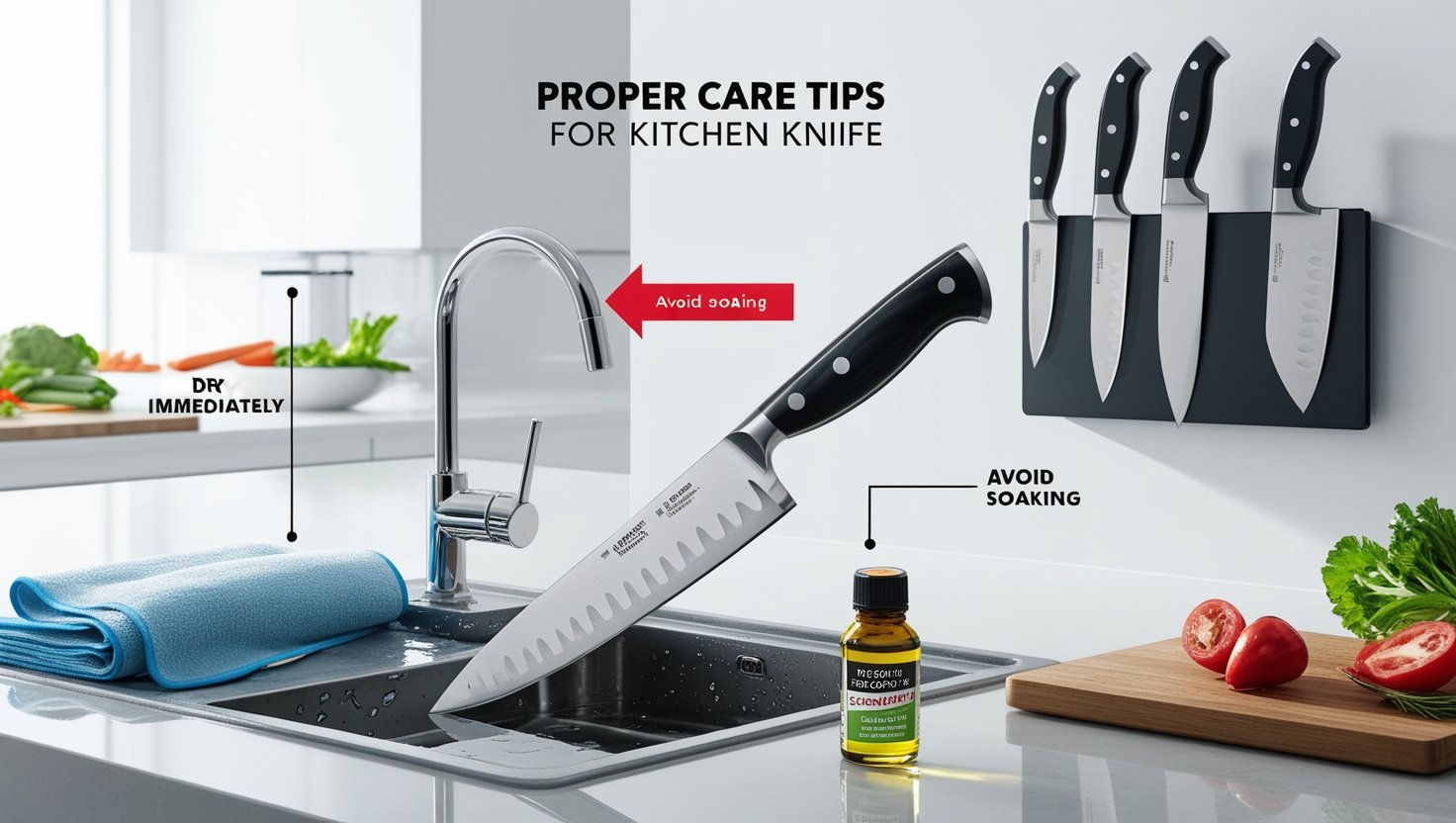
Credit: redfinz.com
Frequently Asked Questions
How Long Can A Kitchen Knife Stay Wet?
A kitchen knife should not stay wet for more than a few minutes. Prolonged exposure to moisture can cause rust and damage the blade.
Can A Wet Knife Cause Rust?
Yes, a wet knife can cause rust. It’s essential to dry it immediately after washing to prevent corrosion.
Is It Safe To Leave A Knife In Water?
No, it’s not safe to leave a knife in water. Prolonged water exposure can weaken the blade and handle.
How Do You Dry A Kitchen Knife?
Dry a kitchen knife immediately after washing. Use a clean, dry cloth to wipe the blade and handle thoroughly.
Conclusion
Dry your kitchen knife promptly after washing. Prolonged wetness causes rust. Rust weakens the blade. Store the knife in a dry place. Regular maintenance ensures longevity. Happy cooking with a sharp, rust-free knife!

